2013 年 12 月英语六级真题(第 2 套)
Part IWriting
(30 minutes)
Directions:Forthispart,youareallowed30minutestowriteanessayonhappiness
by referring to the saying“Happiness is not the absence of problems,
buttheabilitytodealwiththem.”Youcanciteexamplestoillustrate
yourpointandthenexplainhowyoucandevelopyourabilitytodealwith
problems and be happy. You should write at least 150 words but no more
than 200 words.
Part II Listening Comprehension (30 minutes)
Section A
Directions: In this section, you will hear 8 short conversations and 2 long
conversations.Attheendofeachconversation,oneormorequestionswillbeasked
about what was said. Both the conversation and the questions will be spoken only
once. After each question there will be a pause. During the pause, you must read
thefourchoicesmarkedA),B),C)andD),anddecidewhichisthebestanswer.Then
markthecorrespondingletteronAnswerSheet1withasinglelinethroughthecentre.
注意:此部分试题请在答题卡1上作答。
1. A) The rock band needs more hours of practice.
B) The rock band is going to play here for a month.
C) Their hard work has resulted in a big success.
D) He appreciates the woman’s help with the band.
2. A) Go on a diving tour in Europe.
C) Travel overseas on his
own.
B) Add 300 dollars to his budget.
D) Join a package tour to Mexico.
3. A) In case some problem should occur.
C) To avoid more work later
on.
B) Something unexpected has happened.
D) To make better preparations.
4. A) The woman asked for a free pass to try out the facilities.
B) The man is going to renew his membership in a fitness center.
C) The woman can give the man a discount if he joins the club now.
D) The man can try out the facilities before he becomes a member.
5. A) He is not afraid of challenge.
B) He is not fit to study science.
C) He is worried about the test.
D) He is going to drop the physics course
�
6. A) Pay for part of the picnic food.
C) Buy something special for
Gary.
B) Invite Gary’s family to dinner.
D) Take some food to the picnic.
7. A) Bus drivers’ working conditions.
C)Public transportation.
B) A labor dispute at a bus company.
D) A corporate takeover.
8. A) The bank statement.
C) The payment for an order.
B) Their sales overseas.
D) The check just deposited.
Questions 9 to 11 are based on the conversation you have just heard.
9. A) A hotel receptionist.
B) A private secretary.
10. A) Voice.
B) Intelligence.
C) A shop assistant.
D) A sales manager.
C) Appearance.
D) Manners.
11. A) Arrange one more interview.
C) Report the matter to their boss.
B) Offer the job to David Wallace.
D) Hire Barbara Jones on a trial
basis.
Questions 12 to 15 are based on the conversation you have just heard.
12. A) He invented the refrigerator.
C) He got a degree in Mathematics.
B) He patented his first invention.
D) He was admitted to university.
13. A) He distinguished himself in low temperature physics.
B) He fell in love with Natasha Willoughby.
C) He became a professor of Mathematics.
D) He started to work on refrigeration.
14. A) Finding the true nature of subatomic particles.
B) Their work on very high frequency radio waves.
C) Laying the foundations of modem mathematics.
D) Their discovery of the laws of cause and effect.
15. A) To teach at a university.
C) To spend his remaining
years.
B) To patent his inventions.
D) To have a three-week holiday.
Section B
Directions:Inthissection,youwillhear3shortpassages.Attheendofeachpassage,
youwillhearsomequestions.Boththepassageandthequestionswillhe
spoken only once. After you hear a question, you must choose the best
answer from the four choices marked A), B), C) and D). Then mark the
corresponding letter on Answer Sheet 1 with a single line through the
centre.
�
注意:此部分试题请在答题卡1上作答。
Passage One
Questions 16 to 18 are based on the passage you have just heard.
16. A) They have fallen prey to wolves.
B) They have become a tourist attraction.
C) They have caused lots of damage to crops.
D) They have become a headache to the community.
17. A) To celebrate their victory.
C) To scare the wolves.
B) To cheer up the hunters.
D) To alert the deer.
18. A) They would help to spread a fatal disease.
B) They would pose a threat to the children.
C) They would endanger domestic animals.
D) They would eventually kill off the deer.
Passage Two
Questions 19 to 22 are based on the passage you have just heard.
19. A) She is an interpreter.
B) She is a tourist guide.
family.
C) She is a domestic servant.
D) She is from the royal
20. A) It was used by the family to hold dinner parties.
B) It is situated at the foot of a beautiful mountain.
C) It was frequently visited by heads of state.
D) It is furnished like one in a royal palace.
21. A) It is elaborately decorated.
B) It has survived some 2,000 years.
C) It is very big, with only six slim legs.
D) It is shaped like an ancient Spanish boat.
22. A) They are uncomfortable to sit in for long.
B) They do not match the oval table at all.
C) They have lost some of their legs.
D) They are interesting to look at.
Passage Three
Questions 23 to 25 are based on the passage you have just heard.
23. A) It in an uncommon infectious disease.
B) It destroys the patient’s ability to think.
C) It is a disease very difficult to diagnose.
D) It is the biggest crippler of young adults.
�
24. A) Search for the best cure.
C) Write a book about her
life.
B) Hurry up and live life.
D) Exercise more and work
harder.
25. A) Aggressive.
B) Adventurous.
Section C
C) Sophisticated.
D) Self-centered.
Directions:Inthissection,youwillhearapassagethreetimes.Whenthepassage
isreadfortthefirsttime,youshouldlistencarefullyforitsgeneral
idea. When the passageis readfor thesecond time, you are requiredto
fillintheblankswiththeexactwordsyouhavejustheard.Finally,when
the passage is read for the third time, you shouldcheck what you have
written.
注意:此部分试题请在答题卡1上作答。
It’s difficult to estimate the number of youngsters involved in home schooling,
where childrenare not sent to school and receive their formal education from one
or both parents. (26)_______ and court decisions have made it legally possible in
most states for parents to educate their children at home, and each year more people
take advantage of that opportunity. Some states require parents or a home tutor to
meet teacher certification standards, and many require parents to completelegal
forms to verify that their children are receiving (27) _______ in state-approved
curricula.
Supports of home education claim that it’s less expensive and far more
(28)_______ thanmass public education. Moreover, they cite several advantages:
alleviation of school overcrowding, strengthened family relationships, lower (29)
_______ rates, the fact that students are allowed to learn at their own rate,
increased (30) _______, higher standardized test scores, and reduced (31) _______
problems.
Critics of the home schooling movement (32) _______ that it creates as many
problems as it solves. They acknowledge that, in a few cases, home schooling offers
educational opportunities superior to those found in most public schools, but few
parents can provide such educational advantages. Some parents who withdraw their
children from the schools (33) _______ homeschooling have an inadequate educational
background and insufficient formal training to provide a satisfactory education for
their children. Typically, parents have fewertechnological resources (34) _______
than do schools. However, the relatively inexpensivecomputer technology that is
readily available today is causing some to challenge the notion that home schooling
is in any way (35) _______ more highly structured classroom education.
�
Part IIIReading Comprehension
(40 minutes)
Section A
Directions:In this section, there is a passage with ten blanks. You are required
toselectonewordforeachblankfromalistofchoicesgiveninaword
bank following the passage. Read the passage through carefully before
making yourchoices.Eachchoice inthebank isidentified bya letter.
PleasemarkthecorrespondingletterforeachitemonAnswerSheet2with
asinglelinethroughthecentre.Youmaynotuseanyofthewordsinthe
bank more than once.
Questions 36 to 45 are based on the following passage.
Cell phones provide instant access to people. They are creating a major 36 in
the social experiences of both children and adolescents. In one recent U.S. survey,
about half the teens polled said that their cell phone had 37 their communication
with friends. Almost all said that their cell phone was the way they stayed in touch
with peers, one-third had used the cell phone to help a peer in need, and about 80%
said the phone made them feel safer. Teenagers in Australia, 38, said that their
mobile phones provided numerous benefits and were an39 part of their lives;some were
so 40 to their phones that the researchers considered it an addiction. In Japan,
too, researchers are concerned about cell phone addiction. Researchers in one study
in Tokyo found that more than half of junior high school students used their phones
to exchange e-mails with schoolmates more than 10 times a day.
Cell phones 41 social connections with peers across time and space. They allow
young people to exchange moment-by-moment experiences in their daily lives with
special partners and thus to have a more 42 sense of connection with friends. Cell
phones also can 43 social tolerance because they reduce children's interactions with
others who are different from them. In addition to connecting peers, cell phones
connect children and parents. Researchers studying teenagers in Israel concluded
that, in that 44 environment, mobile phones were regarded as“security objects”
in parent-teen relationships―important because they provided the possibility of
45 and communication at all times.
注意:此部分试题请在答题卡2上作答
A) affiliated
B) attached
C) contact
D) contend
E) continuous
F) diminish
G) endurance
I) hazardous
J) improved
K) instantaneous
L) intrinsic
M) relatively
N) shift
O) similarly
�
H) foster
Section B
Directions:In this section, you are going to read a passage with ten statements
attachedtoit.Eachstatementcontainsinformationgiveninoneofthe
paragraphs.Identifytheparagraphfromwhichtheinformationisderived.
Youmaychooseaparagraphmorethanonce.Eachparagraphismarkedwith
aletter.AnswerthequestionsmarkingthecorrespondingletteronAnswer
Sheet 2.
Feeding the 9 Billion: The Tragedy of Waste
Waste Not, Want Not
A)By 2075, the United Nations’mid-range projection for global population is about
9.5 billion. This means that there could be an extra three billion mouths to feed
by the end of the century, a period in which substantial changes are anticipated
in the wealth, calorie intake and dietary preferences of people in developing
countries across the world. Such a projection presents mankind with wide-ranging
social, economic, environmental and political issues that need to be addressed
today to ensure a sustainable future for all. One key issue is how to produce
more food in a world of finite resources.
B)Today, we produce about four billion metric tons of food per year. Yet due to
poor practices in harvesting, storage and transportation, as well as market and
consumer wastage, it is estimated that 30-50% of all food produced never reaches
a human stomach. Furthermore, this figure does not reflect the fact that large
amounts of land, energy, fertilisers and water have also been lost in the
production of foodstuffs which simply end up as waste. This level of wastage is
a tragedy that cannot continue if we are to succeed in the challenge of sustainably
meeting our future food demands.
Where Food Waste Happens
C)In 2010, the Institution of Mechanical Engineers identified three principal
emergingpopulation groups across the world, based on characteristics associated
with their current and projected stage of economic development.
• Fully developed, mature, post-industrial societies, such as those in Europe,
characterised by stable or declining populations which are increasing in age.
• Late-stage developing nations that are currently industrialising rapidly, for
example China, which will experience declining rates of population growth,
coupled with increasing affluence (富裕)and age profile.
�
• Newly developing countries that are beginning to industrialise, primarily in
Africa, with high to very high population growth rates, and characterised by
a predominantly young age profile.
D ) Each group over the coming decades will need to address different issues
surrounding food production, storage and transportation, as well as consumer
expectations, if we are to continue to feed all our people.
E)In less-developed countries, such as those of sub-Saharan Africa and South-East
Asia, wastage tends to occur primarily at the farmer-producer end of the supply
chain. Inefficient harvesting, inadequate local transportation and poor
infrastructure( 基 础 设 施 )mean
that
produce
is
frequently
handled
inappropriately and stored under unsuitable farm site conditions.
F)In mature, fully developed countries such as the UK,
more-efficient farming
practices and better transport,
storage and processing facilities ensure that
a larger proportion of the food produced reaches markets and consumers. However,
characteristics associated with modern consumer culture mean produce is often
wasted through retail and customer behaviour.
G)Major supermarkets, in meeting consumer expectations, will often reject entire
crops of perfectly edible fruit and vegetables at the farm because they do not
meet exacting marketing standards for their physical characteristics, such as
size and appearance.
H)Of the produce that does appear in the supermarket, commonly used sales promotions
frequently encourage customers to purchase excessive quantities which, in the
case of perishable foodstuffs, inevitably generate wastage in the home. Overall
between 30% and 50% of what has been bought in developed countries is thrown
away by the purchaser.
Better Use of Our Finite Resources
I)Wasting food means losing not only life-supporting nutrition but also precious
resources,
including land,
water and energy. As a global society, therefore,
tackling food waste will help contribute towards addressing a number of key
resource issues.
J ) Land Usage:Over the last five decades, improved farming techniques and
technologies have helped to significantly increase crop yields along with a 12%
expansion of farmed land use. However, a further increase in farming area without
impacting unfavourably on what remains of the world’s natural ecosystems
appears unlikely. The challenge is that an increase in animal-based production
will require more land and resources, as livestock ( 牲 畜 )farming demands
extensive land use.
K)Water Usage:Over the past century, human use of fresh water has increased at more
than double the rate of population growth. Currently about 3.8 trillion m3of
�
water is used by humans per year. About 70% of this is consumed by the global
agriculture sector, and the level of use will continue to rise over the coming
decades.
L)Better irrigation can dramatically improve crop yield and about 40% of the world’s
food supply is currently derived from irrigated land. However, water used in
irrigation is often sourcedunsustainably.In processing foods after the
agricultural stage, there are large additional uses of water that need to be
tackled in a world of growing demand. This is particularly crucial inthe case
of meat production, where beef uses about 50 times more water than vegetables.
In the future, more effective washing techniques, management procedures, and
recycling and purification of water will be needed to reduce wastage.
M)Energy Usage: Energy is an essential resource across the entire food production
cycle, with estimates showing an average of 7-10 calories of input being required
in the production of one calorie of food. This varies dramatically depending
on crop, from three calories for plant crops to 35 calories in the production
of beef. Since much of this energy comes from the utilisation of fossil fuels,
wastage of food potentially contributes to unnecessary global warming as well
as inefficient resource utilisation.
N)In the modem industrialised agricultural process—which developing nations are
movingtowards in order to increase future yields—energy usage in the making
and application of fertilisersand pesticides represents the single biggest
component. Wheat production takes 50% of its energy input for these two items
alone. Indeed, on a global scale, fertilisermanufacturing consumes about 3-5%
of the world’s annual natural gas supply. With production anticipated to
increase by 25% between now and 2030, sustainable energy sourcing will become
an increasingly major issue. Energy to power machinery, both on the farm and
in the storage and processing facilities, adds to the energy total, which
currently represents about 3.1% of annual global energy consumption.
Recommendations
O)Rising population combined with improved nutrition standards and shifting dietary
preferences will exert pressure for increases in global food supply. Engineers,
scientists and agriculturalists have the knowledge, tools and systems that will
assist in achieving productivity increases. However, pressure will grow on
finite resources of land, energy and water. The potential to provide 60-100%
more food by simply eliminating losses, while simultaneously freeing up land,
energy and water resources for other uses, is an opportunity that should not
be ignored. In order to begin tackling the challenge, the Institution recommends
that:
�
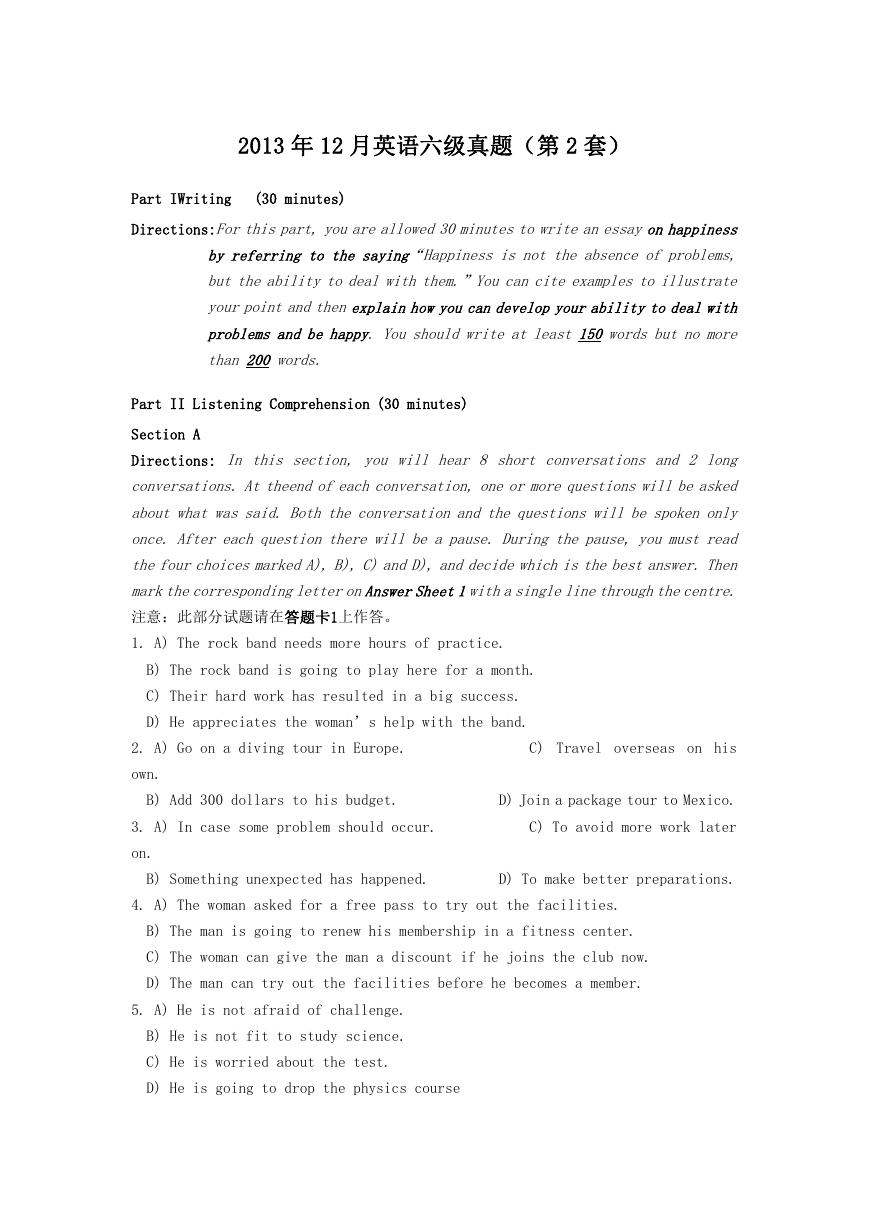
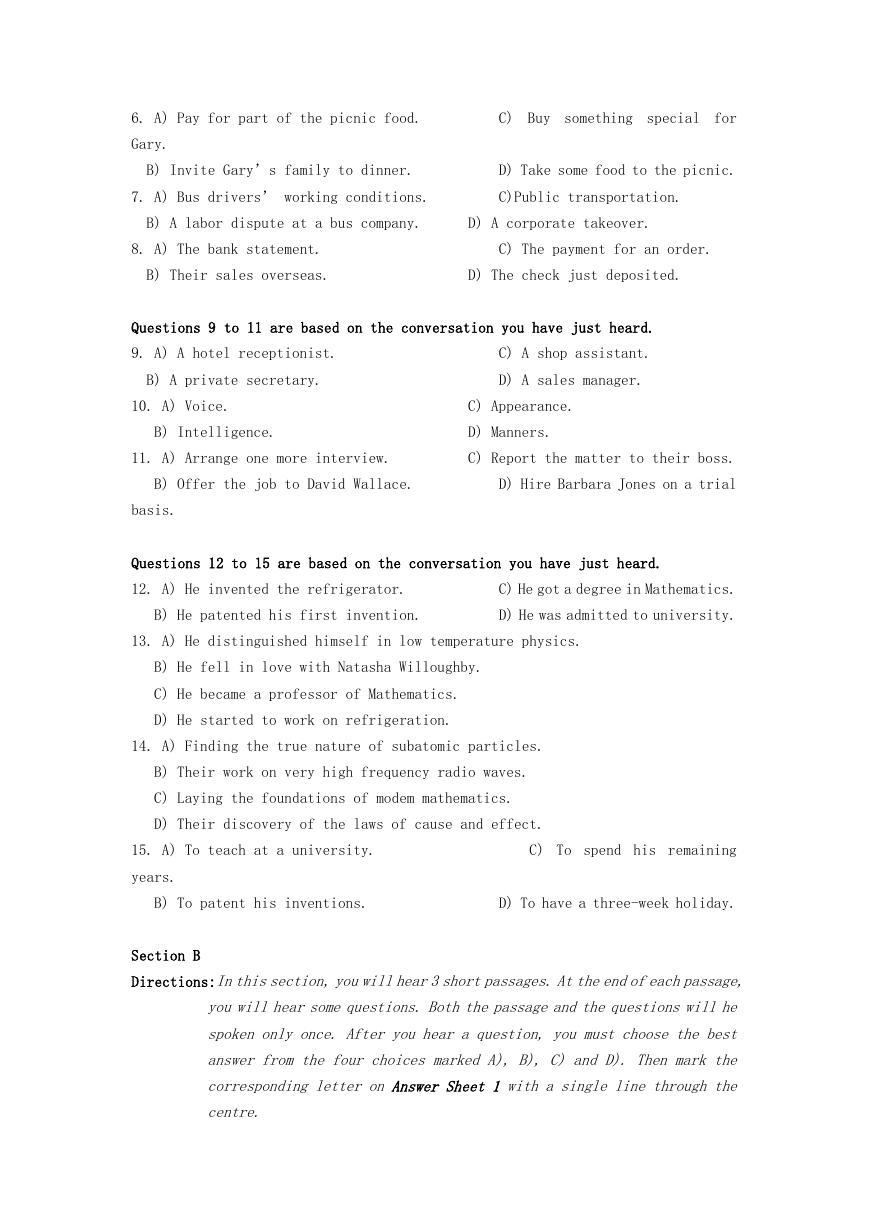
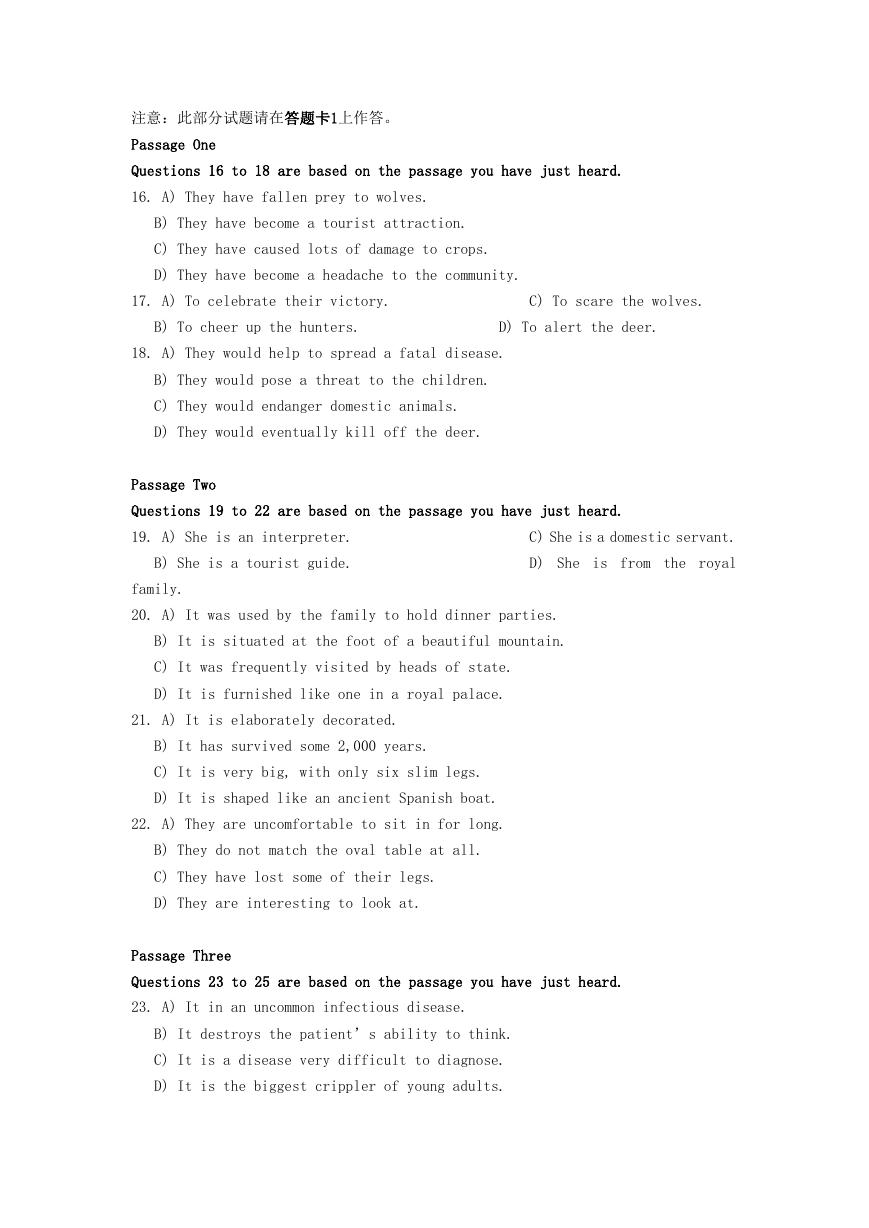

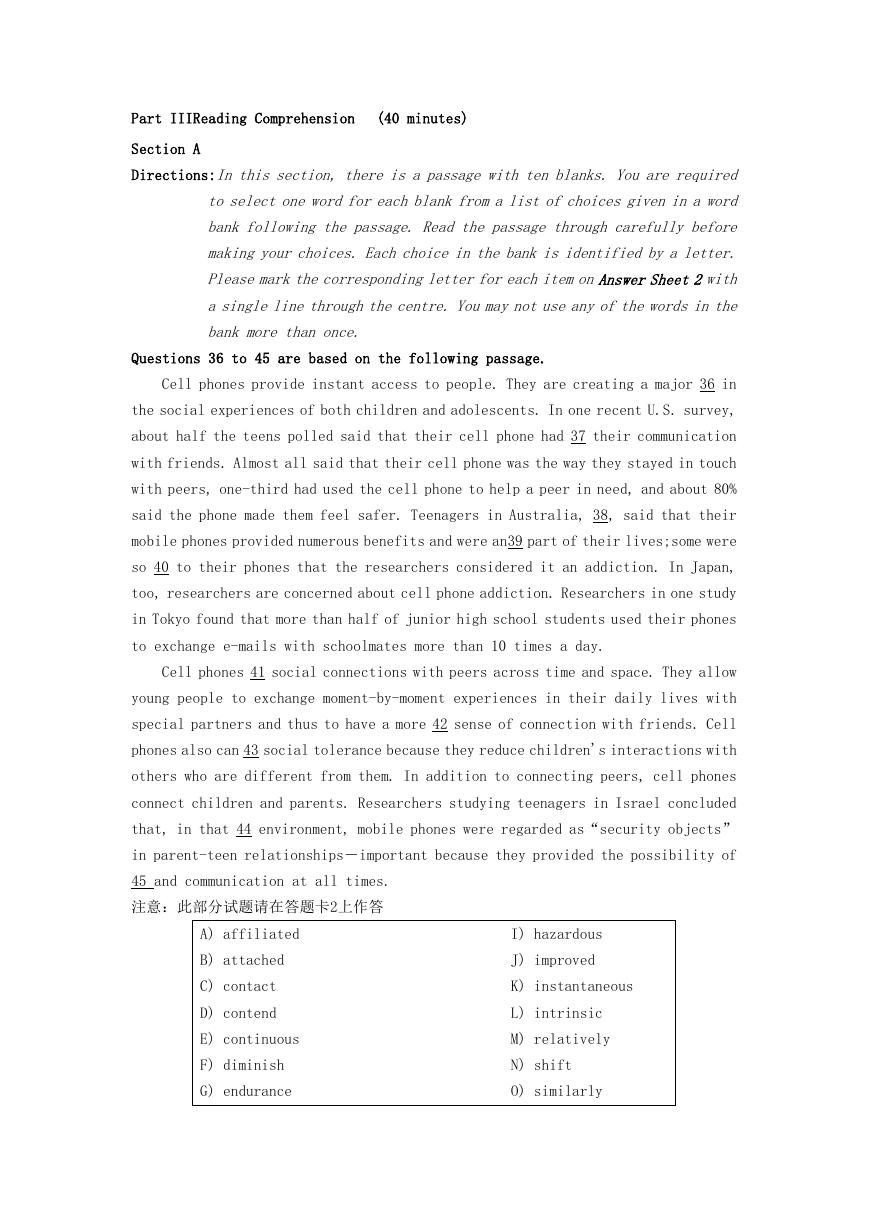

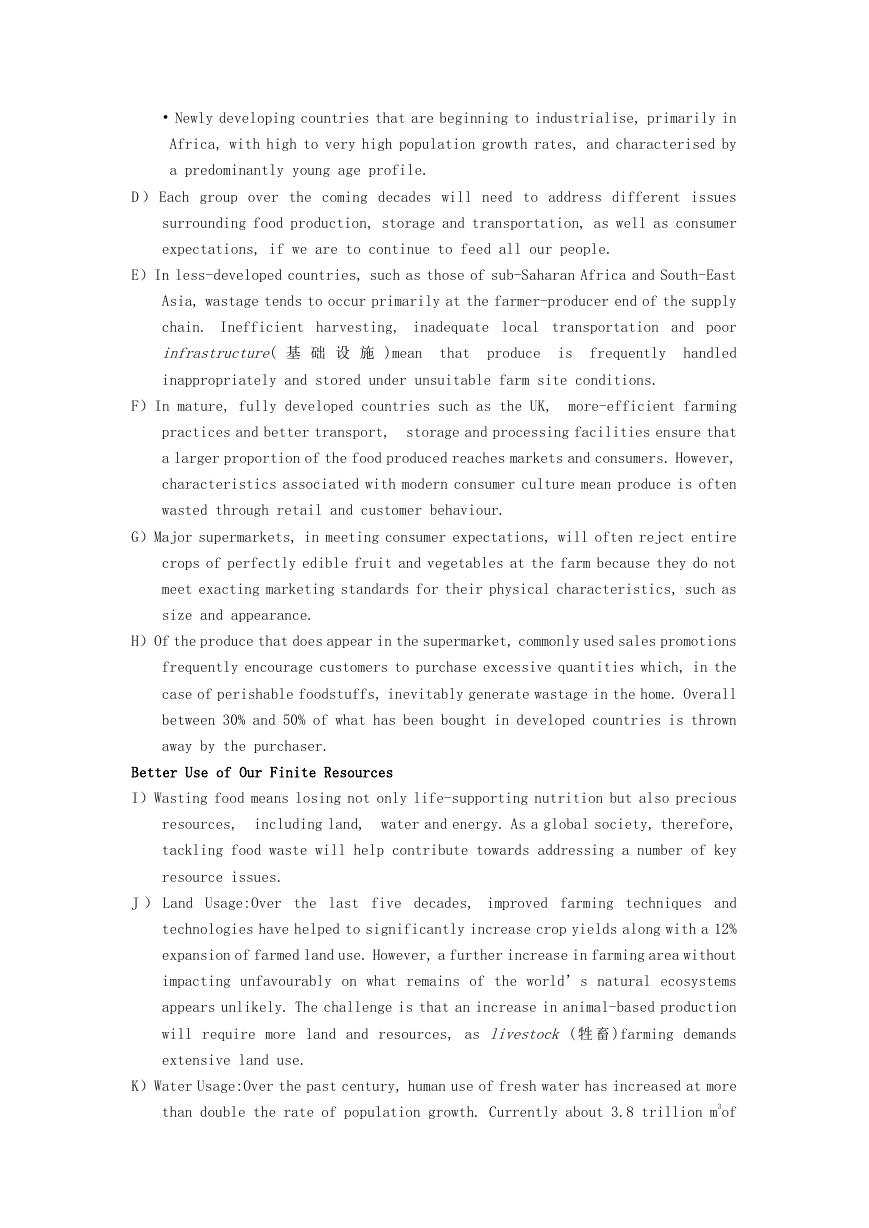









 2023年江西萍乡中考道德与法治真题及答案.doc
2023年江西萍乡中考道德与法治真题及答案.doc 2012年重庆南川中考生物真题及答案.doc
2012年重庆南川中考生物真题及答案.doc 2013年江西师范大学地理学综合及文艺理论基础考研真题.doc
2013年江西师范大学地理学综合及文艺理论基础考研真题.doc 2020年四川甘孜小升初语文真题及答案I卷.doc
2020年四川甘孜小升初语文真题及答案I卷.doc 2020年注册岩土工程师专业基础考试真题及答案.doc
2020年注册岩土工程师专业基础考试真题及答案.doc 2023-2024学年福建省厦门市九年级上学期数学月考试题及答案.doc
2023-2024学年福建省厦门市九年级上学期数学月考试题及答案.doc 2021-2022学年辽宁省沈阳市大东区九年级上学期语文期末试题及答案.doc
2021-2022学年辽宁省沈阳市大东区九年级上学期语文期末试题及答案.doc 2022-2023学年北京东城区初三第一学期物理期末试卷及答案.doc
2022-2023学年北京东城区初三第一学期物理期末试卷及答案.doc 2018上半年江西教师资格初中地理学科知识与教学能力真题及答案.doc
2018上半年江西教师资格初中地理学科知识与教学能力真题及答案.doc 2012年河北国家公务员申论考试真题及答案-省级.doc
2012年河北国家公务员申论考试真题及答案-省级.doc 2020-2021学年江苏省扬州市江都区邵樊片九年级上学期数学第一次质量检测试题及答案.doc
2020-2021学年江苏省扬州市江都区邵樊片九年级上学期数学第一次质量检测试题及答案.doc 2022下半年黑龙江教师资格证中学综合素质真题及答案.doc
2022下半年黑龙江教师资格证中学综合素质真题及答案.doc